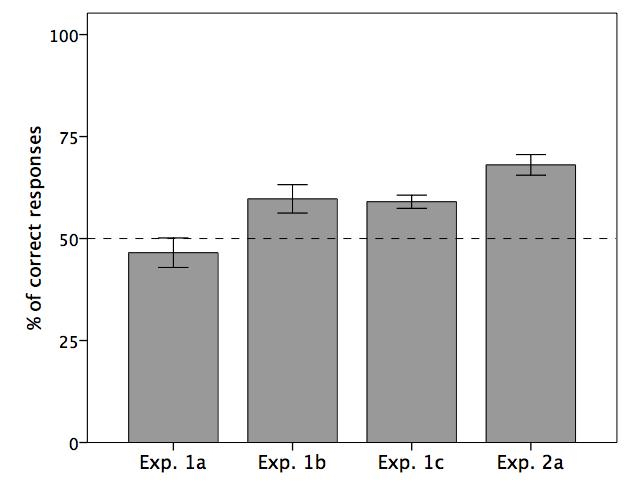Research
Our group tackles the issue of how basic mechanisms involved in language acquistion and music processing have emerged along several lines of research. Recent reviews of our work can be read in:
Toro, J.M. (2016) Something old, somehting new: Combining mechanisms during language acquisition. Current Directions in Psychological Science, 25, 130-134.
Mueller, J., ten Cate, C. & Toro, J.M. (2020). A comparative perspective on the role of acoustic cues in detecting language structure. Topics in Cognitive Science, 12, 859-874.
Toro, J.M. & Crespo-Bojorque, P. (2017). Consonance processing in the absence of relevant experience: Evidence from non-human animals. Comparative Cognition and Behavior Reviews, 12, 10.3819/CCBR.2017.120004.
What are the origins of linguistic constraints?
We have shown functional differences between consonants and vowels during language processing in both human adults and infants. Nevertheless, the origins of such differences are unknown. If functional differences between consonants and vowels observed in humans are the results of acoustic differences between these linguistic categories, we might also observe them in other animals. On the contrary, if such functional differences are observed because humans are endowed with an specialized linguistic mechanism, no differences should be observed in non-human animals.
Related publications:
Toro, J.M., Nespor, M., & Gervain, J. (2016). Frequency-based organization of speech sequences in a non-human animal. Cognition, 146, 1-7.
de la Mora, D., & Toro, J.M. (2013). Rule learning over consonants and vowels in a non-human animal. Cognition, 126, 307-312.
Pons, F., & Toro, J.M. (2010). Structural generalizations over consonants and vowels in 11-month-old infants. Cognition, 116, 361-367.
Toro, J.M., Nespor, M., Mehler, J., & Bonatti, L. (2008). Finding words and rules in a speech stream: functional differences between vowels and consonants. Psychological Science, 19, 137-144.
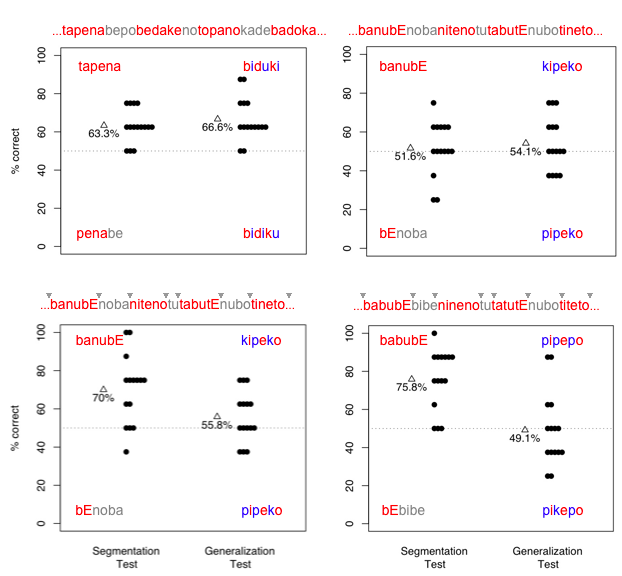
What are the biological bases of music cognition?
We are interested in the study of basic organizing principles that might provide the starting ground for musical abilities. For example, how sequences of beats are represented depending on whether they follow a regular or an irregular meter, and what is the role of consonance and dissonance in shaping acoustic preferences. These phenomena might lay the foundations of how processing resources are initially directed towards relevant sources of information in the music domain. More generally, they provide study cases of how perceptual biases might help to organize the signal.
Related publications:
Celma-Miralles, A. & Toro, J.M. (2020). Non-human animals detect the rhythmic structure of a familiar tune. Psychonomic Bulletin & Review, 27, 694-699.
Pagès-Portabella, C. & Toro, J.M. (2020). Dissonant endings of chord progressions elicit a larger ERAN than ambiguous endings in musicians. Psychophysiology, 13476.
Crespo-Bojorque, P., Monte-Ordoño, J. & Toro, J.M. (2018). Early neural responses underlie advantages for consonance over dissonance. Neuropsychologia, 117, 188-198.
Crespo-Bojorque, P. & Toro, J.M. (2016). Processing advantages for consonance: A comparison between rats (Rattus Norvegicus) and humans (Homo Sapiens). Journal of Comparative Psychology, 130, 97-108.
Celma-Miralles, A., Menezes, R., & Toro, J.M. (2016). Look at the beat, feel the meter: Top-down effects of meter induction on auditory and visual modalities. Frontiers in Human Neuroscience, 10, 108.
Crespo-Bojorque, P. & Toro, J.M. (2015). The use of interval ratios in consonance perception by rats (Rattus Norvegicus) and humans (Homo Sapiens). Journal of Comparative Psychology, 129, 42-51.
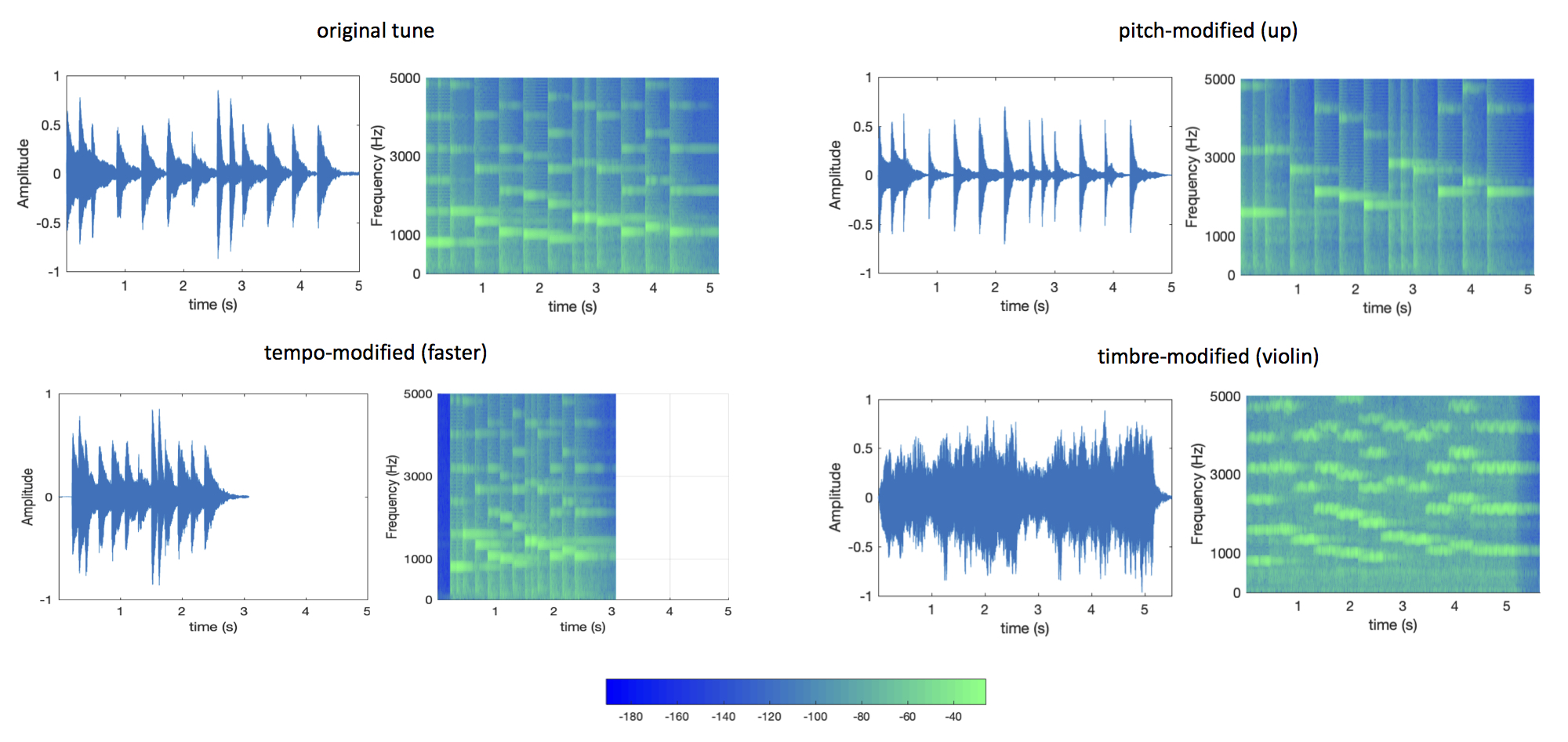
How does rhythm help perceptual grouping?
Humans share with other animals the capacity to extract and use rhythm from the speech signal. In human infants this capacity has been linked to the initial organization of language. Previously, we have shown humans share with non-primate species the ability to detect and use speech prosody to discriminate across languages. We plan to extent this line of research by exploring the use of rhythm for perceptual grouping in non-human animals. One of the initial questions is how certain general perceptual principles described in humans are applied to sound sequences in animals. Parallel results between human and nonhuman animals would be telling regarding the extent to which early perceptual abilities have roots in non-linguistic mechanisms shared across species.
Related publications:
Toro, J.M. & Hoeschele, M. (2017). Generalizing prosodic patterns by a non-vocal learning mammal. Animal Cognition, 20, 179-185.
Toro, J.M., & Nespor, M. (2015). Experience-dependent emergence of a grouping bias. Biology Letters, 11, 20150374.
de la Mora, D., Nespor, M., & Toro, J.M. (2012). Do humans and non-human animals share the grouping principles of the Iambic-Trochaic Law? Attention, Perception & Psychophysics, 75, 92-100.
Toro, J.M., Trobalón, J., & Sebastián-Gallés, N. (2005). The effects of backward speech and speaker variability in language discrimination by rats. Journal of Experimental Psychology: Animal Behavior Processes, 31, 95-100.
Toro, J.M., Trobalón, J., Sebastián-Gallés, N. (2003). The use of prosodic cues in language discrimination tasks by rats. Animal Cognition, 6, 131-136.
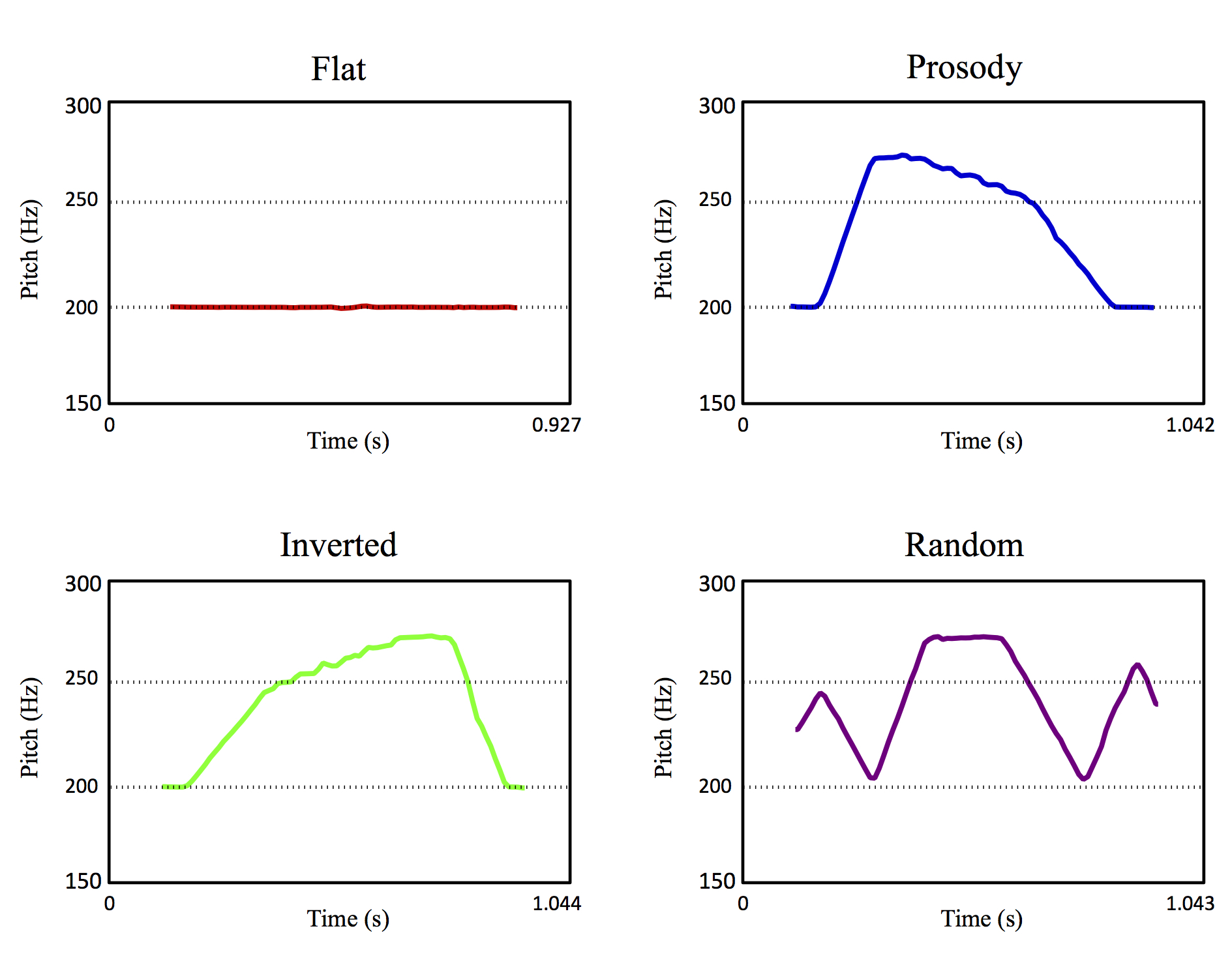
Is structure extraction modulated by attention?
Language learning proceeds in a seemingly effortless manner. This has led to the intuition that to focus attention in a given part of the signal is not necessary to extract regularities from it. Nevertheless, we have demonstrated that when attention is directed away from the input, statistical regularities are not automatically computed. Even more, we showed that attention modulates rule learning from speech, depending on the rule to be learned. We plan to continue studies in this field, hoping they will allow us to understand how relevant regularities are selected from the myriad of information present in the speech signal.
Related publications:
Monte-Ordoño, J. & Toro, J.M. (2019). Differences in relative frequency facilitate learning abstract rules. Psychological Research, 83, 384-394.
Toro, J.M., Sinnett, S., & Soto-Faraco, S. (2011). Generalizing linguistic structures under high attention demands. Journal of Experimental Psychology: Learning, Memory and Cognition, 37, 493-501.
Toro, J.M., Sinnett, S., & Soto-Faraco, S. (2005). Speech segmentation by statistical learning depends on attention. Cognition, 97, B25-B34.
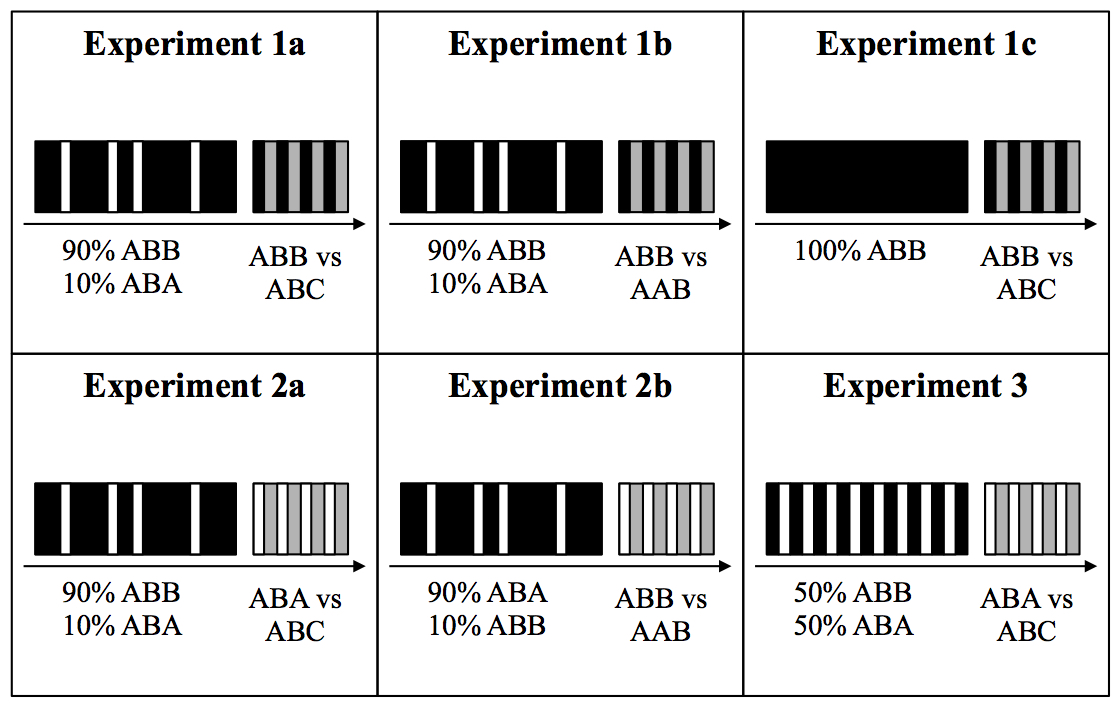
Are different processing levels triggered by specific cues?
There is the possibility that observed functional differences between several cues are a consequence of how they are processed at different levels. That is, several sources of information contribute to language learning. While some of them might be better described as universal (in the sense little or few differences might be observed across varying contexts), other might heavily depend on experience. One way to explore how cues are processed by distinct networks and following separate time courses is to use electrophysiological markers of very early rule violations (e.g. mismatch negativity components) over different phonetic categories.
Related publications:
Monte-Ordoño, J. & Toro, J.M. (2017). Different ERP profiles for learning rules over consonants and vowels. Neuropsychologia, 97, 104-111.
Toro, J.M., Pons, F., Bion, R., & Sebastián-Gallés, N. (2011). The contribution of language-specific knowledge in the selection of statistically-coherent word candidates. Journal of Memory and Language, 64, 171-180.
